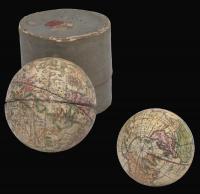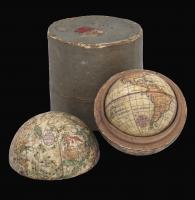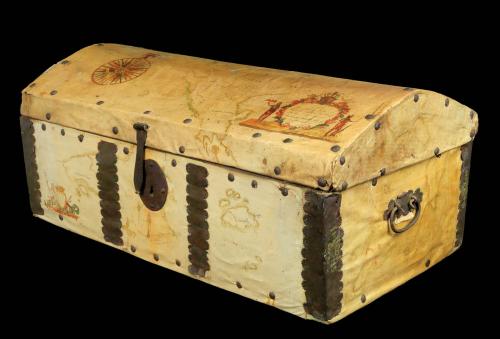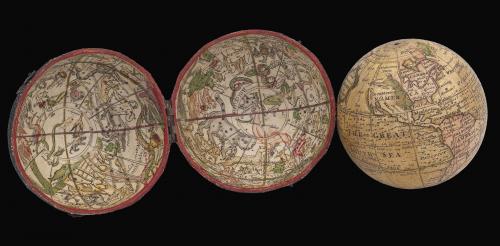
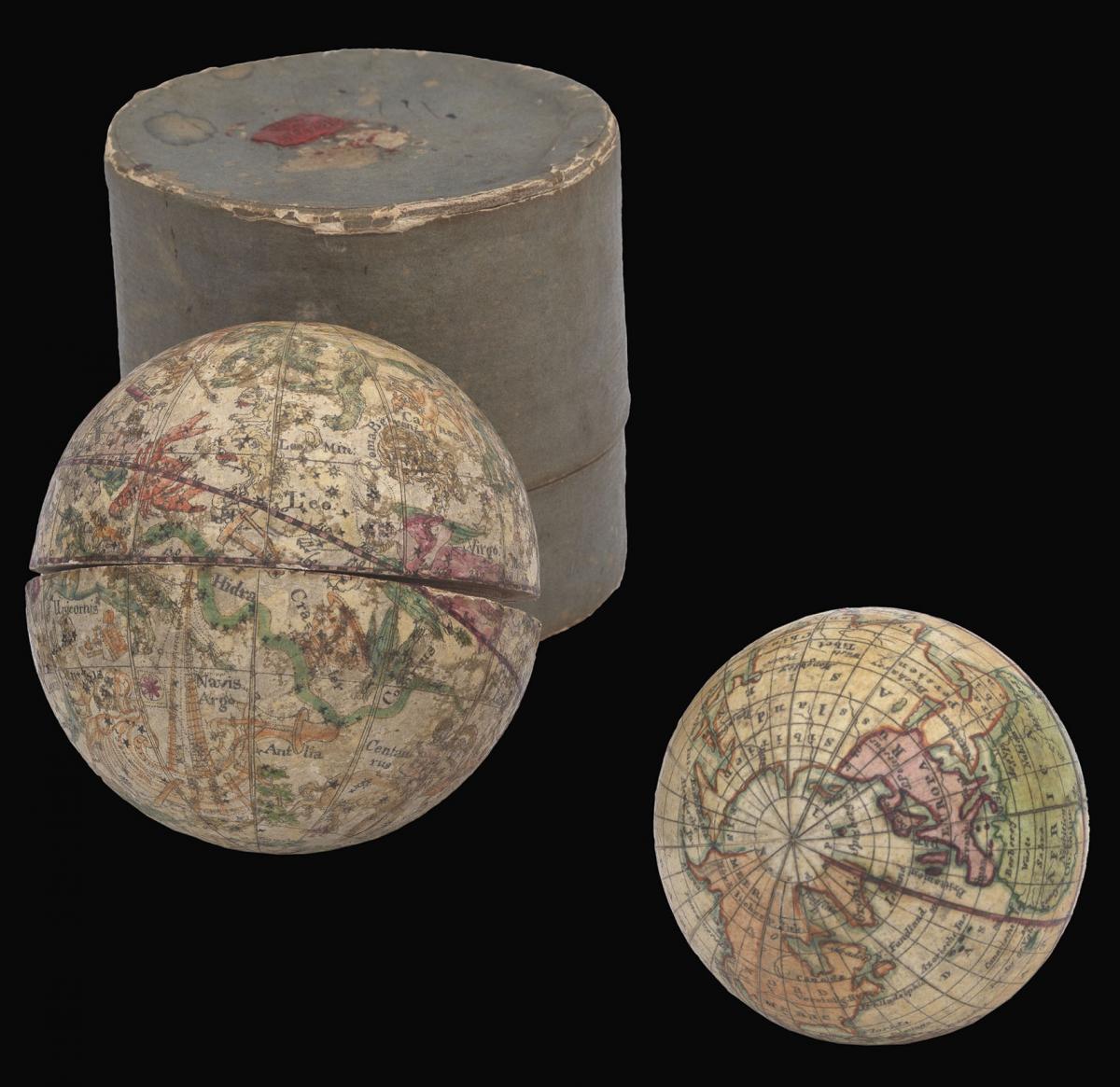
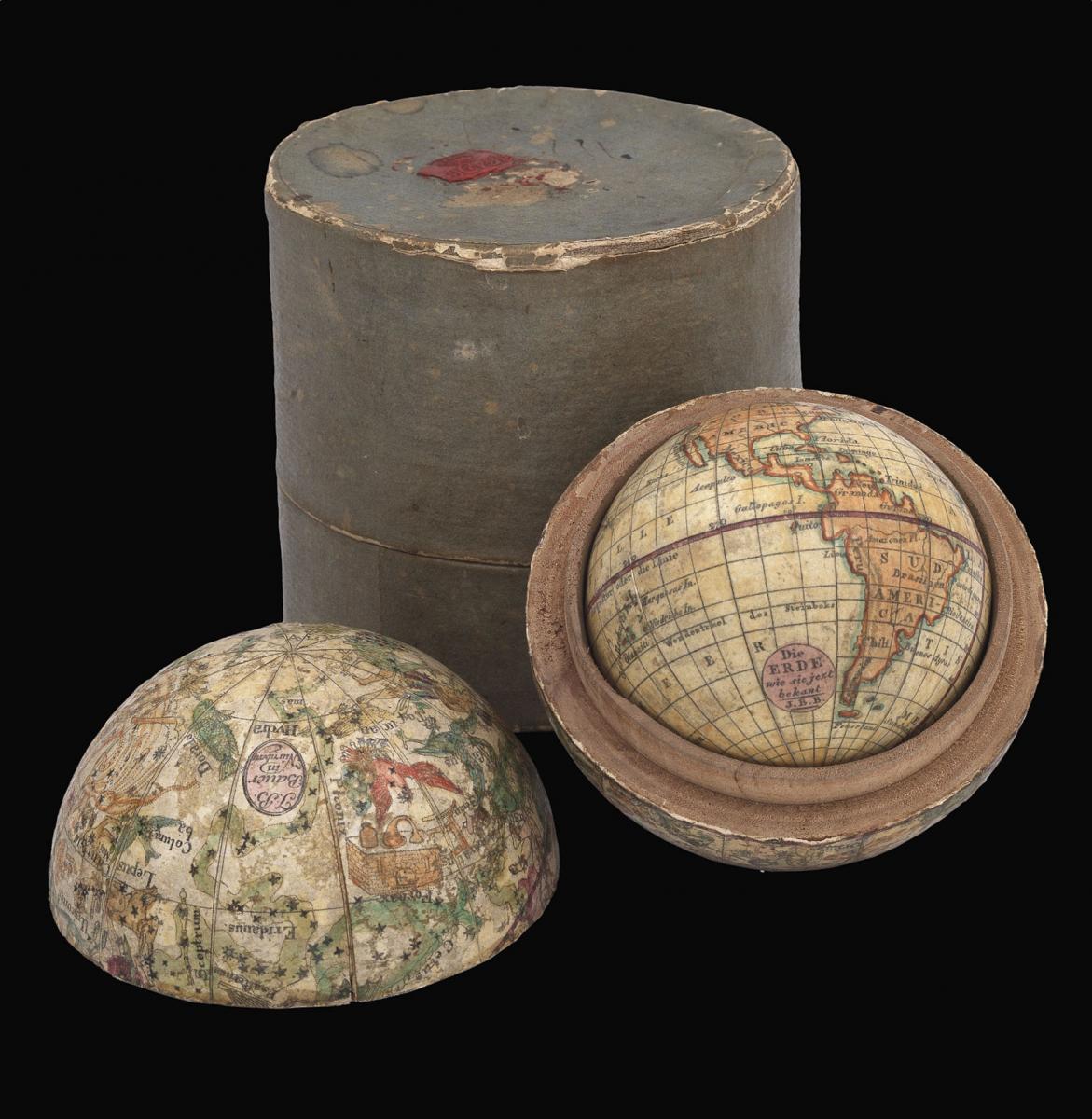
This object is eligible for a Certificate of BADA Provenance
The BADA Standard
- Since 1918, BADA has been the leading association for the antiques and fine art trade
- Members are elected for their knowledge, integrity and quality of stock
- Our clients are protected by BADA’s code of conduct
- Our dealers’ membership is reviewed and renewed annually
- Bada.org is a non-profit site: clients deal directly with members and they pay no hidden fees
Bauer's miniature nesting globes.
Title Die Erde wie sie jezt bekant J.B.B.
Author BAUER, J[ohann] B[ernard].
Publisher J.B. Bauer.
Publication place Nuremberg.
Publication date circa 1810.
Terrestrial and celestial nesting globes, the terrestrial globe with 12 hand-coloured engraved paper gores, over a wooden sphere, housed within the celestial globe made of two wooden hemispheres, each covered with 12 hand-coloured engraved paper half-gores, varnished, housed within original cylindrical case covered with gray paper with red wax seal on top with crown above the letters "Hv K". Short split in southern hemisphere of celestial globe, some loss to paper on case.
Notes
Biography
Johann Bernard Bauer (1752-1839) was a scientific instrument and globemaker working in Nuremberg, along with his sons Carl Johann Sigmund (1780-1857) and Peter Bauer (1783-1847). Johann is recorded as the engraver of a celestial globe by Georg Klinger in 1790; he also published some late editions of the Doppelmayr globes. His sons are best known for their miniature globes published for the educational market.
Geography
Bauer's globe follows German cartography. The prime meridian has a latitude scale and runs through the Canary Islands, and the equator is graduated and labelled "Aequator oder die Linie". The ecliptic is not drawn. There are labels for the Nord Pol, Nordlicher P. Zirk, Wendezirkel des Krebs, Wendezirkel des Steinboks, Sudlicher Poalrzirkel and Sud Pol. There is a simple outline of the continents. The Antipoten of Nuremberg are marked. At the north-west coast of America there is a notation "Vancovens In.". Tasmania is labelled "Van Diemen Ld.", and it is drawn as an island, suggesting a date of construction after 1805.
Astronomy
The celestial globe follows Latin and German cartography. The stars are represented by different symbols but a magnitude table is lacking. The 48 Ptolemaic constellations and three non-Ptolemaic constellations are shown: Antinous (drawn but not labelled), Coma Berenice and Columba. Also depicted are the 12 southern constellations of Plancius (Volans and Musca are drawn but not labelled), Giraffe, Unicornis, Robur Car (drawn but not labelled), Sceuptrum, a few of those of Hevelius (Canes, Lacerta, Leo Min, Linx, Vulpes, Anser, Mons, Menalus, and Musca - drawn but not labelled); six of Lacaille (Fornax, Antlia, Norma, Regula, Apparatus Sculp, and Pyxis - drawn but not labelled), Gloria Fried:, Tubus, Custos Mes., Psalterium.
Bibliography
Dekker GLB0048; Van der Krogt Bau 2 (terrestrial), Bau 3 (celestial).
Dimensions
Diameter: 58mm and 64mm (2.25 inches and 2.5 inches) respectively.Stock number
15653The BADA Standard
- Since 1918, BADA has been the leading association for the antiques and fine art trade
- Members are elected for their knowledge, integrity and quality of stock
- Our clients are protected by BADA’s code of conduct
- Our dealers’ membership is reviewed and renewed annually
- Bada.org is a non-profit site: clients deal directly with members and they pay no hidden fees


